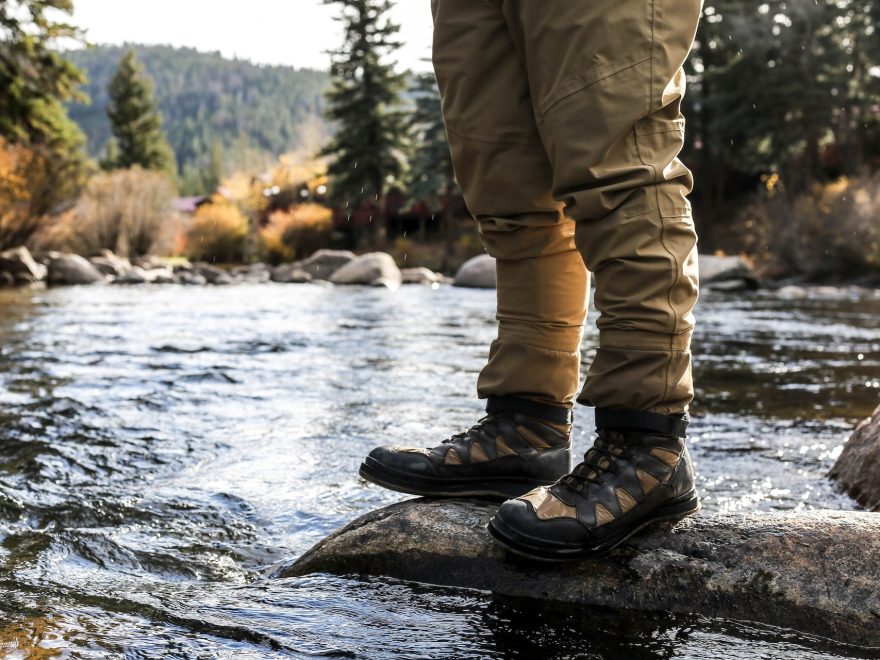When it comes to long walks or hikes, selecting the right footwear can make all the difference. While some may argue that walking shoes are enough for walking and hiking. Others claim that hiking boots are the better option. So, are hiking boots better than walking shoes when it comes to long walks and hikes?
In this blog post, we’ll explore whether hiking boots are superior to walking shoes.
We’ll be discussing the key differences between hiking boots and walking shoes. We’ll also be exploring the various features that hiking boots offer. How they can make a difference when it comes to long walks and hikes.
We’ll be highlighting 5 reasons why using hiking boots for walking can be beneficial.
Whether you’re a seasoned hiker or enjoying a good long walk, choosing the right footwear is crucial. So, let’s dive in and explore whether hiking boots are the superior option for lengthy walks and hikes.
Are Hiking Boots Better Than Walking Shoes?
Are you someone who loves to go for long walks or hikes, but can’t decide between walking shoes and hiking boots? Don’t worry, you’re not alone! It’s a common dilemma faced by many outdoor enthusiasts.
Let’s dive into the world of hiking boots and see if they can double as walking shoes.
Comfort
When it comes to long walks or hikes, comfort is key. Hiking boots are often designed to provide the most comfort and support to your feet, ankles, and legs. They have a sturdy build that can handle rough terrain and uneven surfaces. They also provide cushioning for your feet.
Walking shoes are lightweight and flexible. The flexibility is great for a casual stroll or a quick workout, but may not be enough for a long hike.

Durability
Hiking boots can withstand the toughest of conditions like rocky terrain. The sturdy materials construction such as leather, Gore-Tex, and Vibram rubber soles. This makes them durable and long-lasting.
Walking shoes are not designed for such extreme conditions and may not last as long as hiking boots.
Approach shoes
If you’re looking for a shoe that can do both hiking and walking, approach shoes might be the answer. They are a hybrid of hiking boots and climbing shoes. The approach shoes are generally designed for activities like hiking and rock climbing.
They provide the grip and support of hiking boots. While also being lightweight and flexible like walking shoes.
Walking footwear
If you’re a walker, then walking shoes or walking boots might be the better option for you. They are often designed for walking. The walking shoes provide the necessary support and cushioning for your feet.
Walking shoes come in a variety of styles, including sneakers, casual shoes, and boots. They can be usually worn on both paved and unpaved surfaces.
In conclusion, hiking boots can be good for walking, but they are not the only option.
Hiking Boots vs Walking Shoes: 3 Differences
Introducing the debate of hiking boots vs walking shoes: which is better?
As a hiking enthusiast, I know the importance of having the right footwear. That’s why I want to shed light on the key differences between hiking boots and walking shoes.
So, you can make an informed decision for your next excursion. Here are three differences that may sway your decision:
Foot Support
Hiking boots are often designed to provide more foot support than walking shoes. This is especially important on uneven terrain or long hikes where your feet may fatigue.
The sturdy construction of hiking boots with extra padding around the ankle. The underfoot helps protect your feet from rocks, roots, and other obstacles.
Arch Support
Hiking boots are also known for having better arch support than walking shoes. The arch of your foot is crucial to maintaining proper alignment and balance.
The proper alignment helps to hike on uneven surfaces. Hiking boots offer more stability and reduce the risk of foot and ankle injuries.
Heel Cushioning
The level of heel cushioning in hiking boots is more than in walking shoes. Hiking boots have thicker soles and more cushioning in the heel to absorb shock. This can help prevent injuries to your knees, hips, and lower back.
In conclusion, both hiking boots and walking shoes have their advantages. The extra foot and arch support make hiking boots the better choice for outdoors.
5 Reasons To Use Hiking Boots For Walking
As a hiking enthusiast, I find myself debating between hiking boots or walking shoes. While both types of footwear have their advantages. There are a few differences that make them better suited for different activities.
Support
One major difference between hiking boots and walking shoes is the level of support. Hiking boots are also designed with more rigid materials. These rigid materials provide greater stability and prevent ankle injuries.
They often have a high-top design that extends above the ankle to offer extra support. Walking shoes have a more flexible sole. These shoes are usually designed for lighter activities.
Tough Sole
Another difference between hiking boots and walking shoes is sole toughness. Hiking boots are also built with a thicker and tougher soles. These provide protection against rough terrain.
Walking shoes have a thinner and more flexible sole. This is perfect for activities that involve a lot of walking on even surfaces.
Material
The material used to make hiking boots and walking shoes also differs. Hiking boots are often made of more durable materials. They include leather, synthetic fabrics, or a combination of both.
These materials are water-resistant and can withstand rough terrain and harsh weather conditions.
Walking shoes are also made with breathable materials. These include mesh or lightweight fabrics. These fabrics allow your feet to stay cool and dry during long walks.
Ankle Support
Hiking boots are often designed with a high-top design that offers added support to the ankle. This prevents ankle sprains and other injuries when hiking on uneven terrain.
Walking shoes do not have ankle support and are better suited for walking on even surfaces.
Traction
Finally, the traction of hiking boots is much more robust than that of walking shoes. Hiking boots have deeper treads and provide a better grip on rough terrain.
This can be especially important when hiking in wet or slippery conditions. Walking shoes have a shallower tread. The shallower tread is better suited for walking on pavement or sidewalks.
In conclusion, hiking boots and walking shoes may look similar. There are some significant differences between the two types of footwear.
Conclusion
In conclusion, both hiking boots and walking shoes have their own unique benefits. It depends on the type of walking you plan to do.
Hiking boots are a better choice for more rugged terrain and longer hikes. This provides better ankle support, traction, and protection.
Walking shoes are more lightweight and breathable. This makes them a great choice for shorter and less demanding walks.
It’s important to choose footwear that fits your needs and preferences.
Whether that’s a sturdy pair of hiking boots or a comfortable pair of walking shoes. With the right footwear, you can enjoy your walks and hikes in comfort and safety.
FAQs
Yes, it is okay to wear hiking boots for walking, as they provide extra support and protection.
A walking boot is better for everyday use and flat terrain. While a hiking boot is better for more rugged terrain and longer hikes.

Tyler Looney is an avid hiking enthusiast and the author of HikingBootsPros.com, a website dedicated to providing helpful insights and advice on choosing the best hiking boots. His expertise and passion for hiking have made him a valuable resource for both beginner and experienced hikers alike.

